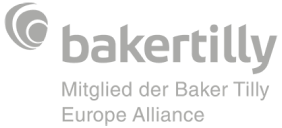News
16. March 2023
Reading Time: 4
Min.
news
ESRS 2 – European Sustainability Reporting Standard 2: General disclosures
This article is based on the delegated regulation of the ESRS which was published in the Official Journal of the EU on 22nd December 2023. Here you can find a general overview of the ESRS.
ESRS 2 General disclosures can be assigned to the cross-cutting standards and specifies requirements that must be disclosed regardless of the company’s sector. ESRS 2 distinguishes between disclosure requirements, which require explicit data on various sustainability topics, and minimum disclosure requirement, which defines the general structure and minimum content of disclosures regarding guidelines, measures, and objectives in the topical standards.
The ESRS 2 is divided into the following sections:
- Basis for Preparation (BP)
- Governance (GOV)
- Strategy (SBM)
- Impact, risk and opportunity management (IRO)
- Metrics and targets (MDR)
1. Basis for Preparation (BP-1 and BP-2)
The information on the disclosure requirements under BP-1 and BP-2 is intended to provide information on the procedures and principles of a company’s reporting. In the case of consolidated reporting, the scope of consolidation must be disclosed. When data is not published in the general disclosure requirements due to its sensitivity or there is an estimation uncertainty, this must be indicated. Furthermore, identified errors from previous periods and changes in the presentation of the information must be reported.
2. Governance (GOV-1 – GOV-5)
The governance chapter is aimed at establishing an understanding of the governance processes, controls and procedures put in place to monitor and manage sustainability issues. According to GOV-1, the composition of the administrative, management and supervisory bodies, their tasks and responsibilities must be disclosed in order to increase the diversity of the active bodies, including gender diversity. In addition, information regarding access to expertise and skills related to sustainability issues must be disclosed. According to GOV-2, companies must report on how sustainability-related issues are communicated to and subsequently addressed by the management. The disclosure requirements under GOV-3 require the integration of sustainability-related performance into incentive schemes. Companies, as required by GOV-4, must disclose where the sustainability due diligence process information can be found. According to GOV-5, the company must provide insight into the company’s risk management and internal control processes related to sustainability reporting.
3. Strategy (SBM-1 – SBM-3)
According to the SBM-1 disclosure requirements, the company’s market position, sustainability-related elements of the strategy, business models and key value chains must be disclosed. To ensure that the corporate strategy is aligned with stakeholders, SBM-2 requires the company to disclose how their interests and views are taken into account in the business model. In accordance with SBM-3, companies are required to disclose their material sustainability-related impacts, risks and opportunities. Furthermore, it must be shown how these are related to the strategy and the business model.
4. Impact, risk and opportunity management (IRO-1 and IRO-2, MDR-P and MDR-A)
This section is divided into two subsections: 4.1 Disclosures on the materiality assessment process and 4.2 Minimum disclosure requirement on policies and actions. According to IRO-1 in subsection 4.1, companies must disclose the processes used to identify impacts, risks and opportunities and the processes used to assess them. According to IRO-2, the disclosure requirements covered in the sustainability statements must be reported. Furthermore, it must be disclosed which topics were classified as non-material on the basis of the materiality assessment and were omitted for this reason. Subsection 4.2 covers the minimum disclosure requirement on policies and actions.
5. Metrics and targets (MDR-M and MDR-T)
Companies must disclose which metrics from topical and sector-specific ESRS or which company-specific metrics they use to assess a material impact of a risk or opportunity (IRO). It must also disclose whether the ESRS metrics have been validated by an external party, other than the auditor of the sustainability reporting. In order for conclusions to be drawn about the effectiveness of the methods and measures set, the target figures used for the material sustainability aspects must be disclosed by the companies. This is intended to provide transparency with regard to the effectiveness of the measures and the overall progress of the targets set.
More Information to ESRS Standards
European Sustainability Reporting Standard 1: General requirements

9. March 2023
News
6
Min. Reading Time
On November 23, 2022, the European Financial Reporting Advisory Group (EFRAG) submitted the drafts for 12 sector-independent sustainability reporting standar...
ESRS E1 – Climate Change

25. March 2024
News
7
Min. Reading Time
The ESRS E1 standard is one of five environment-specific standards of the European Sustainability Reporting Standards. These were developed by EFRAG (Europea...
ESRS E2 – Pollution

19. April 2023
News
5
Min. Reading Time
The Standard ESRS E2 is one of 5 environment-specific standards of the European Sustainability Reporting Standards, which were developed by EFRAG and are to ...
ESRS E3 – Water and marine resources

2. May 2023
News
5
Min. Reading Time
The E3 standard is one of 5 environment-specific standards of the European Sustainability Reporting Standards. The standards were developed by EFRAG and are ...
ESRS E4 – Biodiversity and ecosystems

26. May 2023
News
5
Min. Reading Time
The E4 standard is one of 5 environment-specific standards of the European Sustainability Reporting Standards. The standards were developed by EFRAG and are ...
ESRS E5 – Resource use and circular economy

7. July 2023
News
6
Min. Reading Time
The ESRS E5 is one of 5 environment-specific standards of the European Sustainability Reporting Standards. The standards were developed by EFRAG and are to b...








